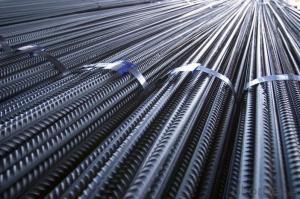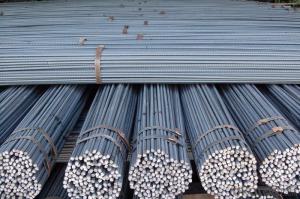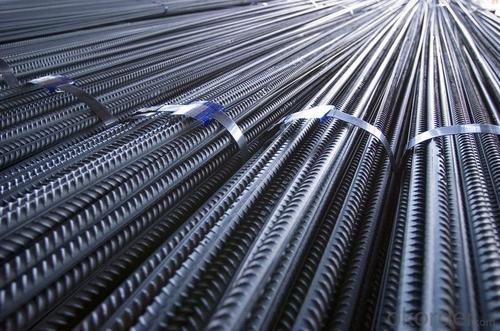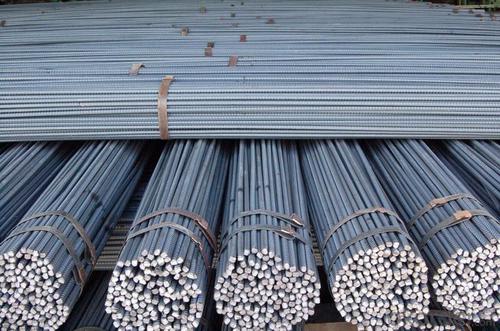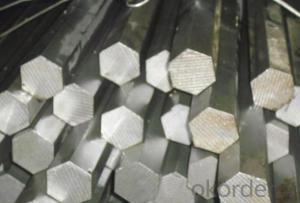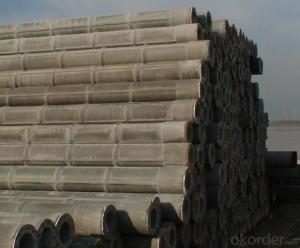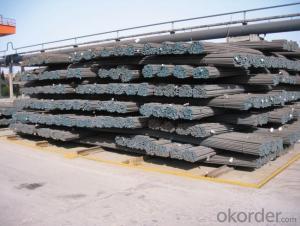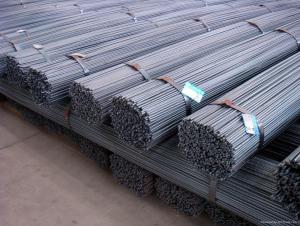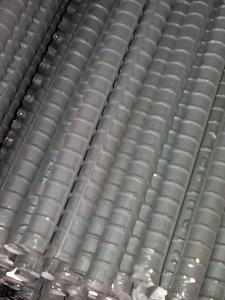Hot Rolled Deformed bar with Good Quality
- Loading Port:
- Tianjin
- Payment Terms:
- TT OR LC
- Min Order Qty:
- 25 m.t.
- Supply Capability:
- 10000 m.t./month
OKorder Service Pledge
OKorder Financial Service
You Might Also Like
OKorder is offering Deformed Steel Bar with high quality at great prices with worldwide shipping. Our supplier is a world-class manufacturer of steel, with our products utilized the world over. OKorder annually supplies products to European, North American and Asian markets. We provide quotations within 24 hours of receiving an inquiry and guarantee competitive prices.
Note:
1. Our products are produced according to national standard (GB), if not, supply according to national standards (GB) or agreement as customer required.
2. Other Grade and Standard Deformed Steel Bar we can supply:
Grade: GR40/GR60, G460B/B500A/B500B/B500C,BST500S
Standard: ASTM, BS, DIN
3. We can not only supply Deformed Steel Bar; if you need anything about building materials, please contact us for further information.
4. Please send us your detail specifications when inquire. We will reply to you as soon as possible. We sincerely hope we can establish a long stable business relationship.
Product Applications:
Deformed Steel Bar with high quality are ideal for structural applications and are widely used in the construction of buildings and bridges, and the manufacturing, petrochemical, and transportation industries.
Product Advantages:
OKorder's Deformed Steel Bar with high quality are durable, strong, and resist corrosion.
Main Product Features:
· Premium quality
· Prompt delivery & seaworthy packing (30 days after receiving deposit)
· Corrosion resistance
· Can be recycled and reused
· Mill test certification
Product Specifications:
Standard | GB | HRB400 | |
Diameter | 10mm-32mm | ||
Length | 6M, 12M | ||
Place of origin | Hebei, China mainland | ||
Advantages | exact size, regular package, chemical and mechanical properties are stable. | ||
Type | Hot rolled deformed steel bar | ||
Chemical Composition:
Grade | Technical data of the original chemical composition (%) | ||||||
C | Mn | Si | S | P | V | ||
HRB400 | ≤0.25 | ≤1.60 | ≤0.80 | ≤0.045 | ≤0.045 | 0.04-0.12 | |
Physical capability | |||||||
Yield Strength (N/cm²) | Tensile Strength (N/cm²) | Elongation (%) | |||||
≥400 | ≥570 | ≥14 | |||||
Theoretical weight and section area of each diameter as below for your information:
Diameter(mm) | Section area (mm²) | Mass(kg/m) | Weight of 12m bar(kg) |
18 | 254.5 | 2.00 | 24 |
20 | 314.2 | 2.47 | 29.64 |
22 | 380.1 | 2.98 | 35.76 |
FAQ:
Q1: Why buy Materials & Equipment from OKorder.com?
A1: All products offered byOKorder.com are carefully selected from China's most reliable manufacturing enterprises. Through its ISO certifications, OKorder.com adheres to the highest standards and a commitment to supply chain safety and customer satisfaction.
Q2: How do you guarantee the quality of our products?
A2: We have established an advanced quality management system which conducts strict quality tests at every step, from raw materials to the final product. At the same time, we provide extensive follow-up service assurances as required.
Q3: How soon can we receive the product after purchase?
A3: Within three days of placing an order, we will begin production. The specific shipping date is dependent upon international and government factors, but is typically 7 to 10 workdays.
bdenum enhance this surface layer and improve the corrosion resistance of the stainless material.
Images:
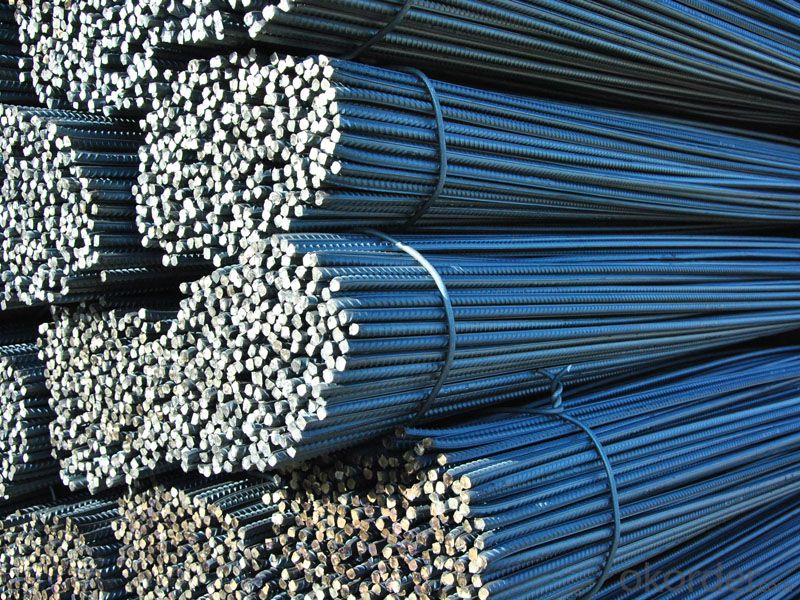
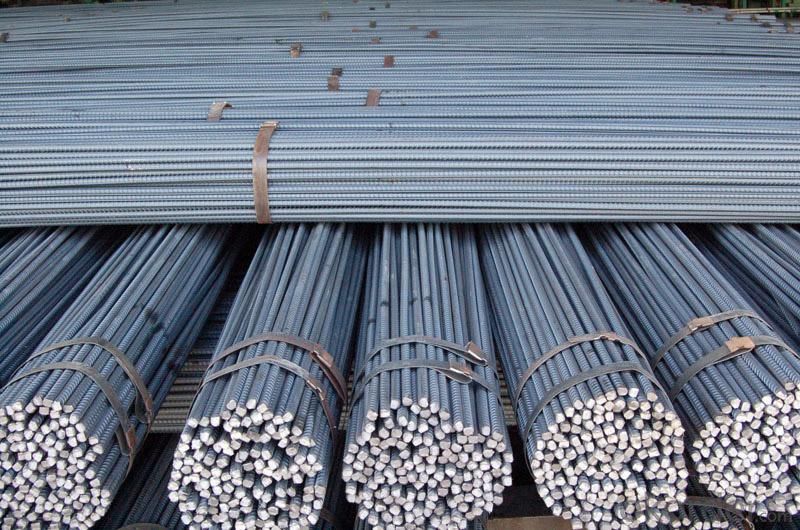
- Q: What is the recommended diameter of steel rebars for slab reinforcement?
- The recommended diameter of steel rebars for slab reinforcement typically ranges from 8mm to 25mm, depending on the specific requirements of the project, load-bearing capacity, and engineering design.
- Q: Can steel rebars be used in water treatment plants?
- Yes, steel rebars can be used in water treatment plants. Steel rebars are commonly used in the construction of various structures, including water treatment plants, due to their strength, durability, and resistance to corrosion. The rebars provide reinforcement to concrete structures, ensuring their stability and longevity in the harsh environment of water treatment plants.
- Q: What is the recommended spacing between steel rebars in concrete slabs?
- The recommended spacing between steel rebars in concrete slabs typically ranges from 12 to 18 inches, depending on the specific engineering and structural requirements of the project.
- Q: Can steel rebars be used in wastewater storage tanks?
- Yes, steel rebars can be used in wastewater storage tanks.
- Q: Are steel rebars subject to any international standards or regulations?
- Yes, steel rebars are subject to international standards and regulations. The most widely recognized international standard for steel rebars is the ISO 6935-2 standard, which sets requirements for the chemical composition, mechanical properties, and dimensions of rebars. Additionally, various countries have their own national standards and regulations that ensure the quality and safety of steel rebars used in construction projects.
- Q: What are the common manufacturing processes for steel rebars?
- The common manufacturing processes for steel rebars involve several steps to ensure the production of high-quality and durable reinforcement bars. These processes typically include: 1. Melting: The first step in manufacturing steel rebars is melting the raw materials, which usually consist of iron ore, coal, and limestone, in a blast furnace. This process produces molten iron that is then further refined to remove impurities. 2. Casting: Once the molten iron is refined, it is poured into molds to create large billets or blooms. These molds are often called continuous casting machines, where the molten iron solidifies into a rectangular shape. 3. Rolling: The solidified billets or blooms are then heated and passed through rolling mills. The rolling process involves compressing the steel between a series of rollers to reduce its thickness and shape it into the desired dimensions of rebars. This process also helps improve the mechanical properties and eliminate any internal defects or impurities. 4. Quenching and Tempering: After the initial rolling process, the rebars may undergo quenching and tempering. Quenching involves rapidly cooling the steel bars by immersing them in water or oil. This step increases the hardness of the rebars, making them more resistant to deformation and wear. Tempering follows, which involves reheating the quenched bars to a specific temperature and then cooling them slowly. Tempering helps remove internal stresses and improves the toughness of the rebars. 5. Cutting and Coiling: Once the bars have been rolled and heat-treated, they are cut to the desired lengths using cutting machines. The cut rebars are then coiled into bundles or stacked for storage and transportation. 6. Surface Treatment: To enhance the corrosion resistance of rebars, manufacturers often apply a protective coating or surface treatment. This can involve hot-dip galvanizing, where the rebars are immersed in molten zinc to form a zinc coating, or epoxy coating, where a layer of epoxy resin is applied to the rebars. It is important to note that these manufacturing processes may vary depending on the specific requirements and standards set by different countries and industries. However, the aforementioned steps provide a general overview of the common processes involved in manufacturing steel rebars.
- Q: Can steel rebars be used in historical bridge restoration?
- Historical bridge restoration projects can benefit from the use of steel rebars. Over time, many historical bridges may have experienced deterioration or damage, and steel rebars can play a crucial role in providing strength and stability during the restoration process. Reinforced concrete structures often rely on steel rebars, which effectively reinforce the structural integrity of the bridge. Nevertheless, it is essential to carefully consider the historical bridge's aesthetics and guarantee that the incorporation of steel rebars does not compromise its historical value or appearance. Preservation guidelines and consultations with historical experts can prove invaluable in determining the suitable application of steel rebars in historical bridge restoration endeavors.
- Q: Can steel rebars be used in historical buildings restoration?
- Indeed, the utilization of steel rebars is applicable in the restoration of historical buildings. These rebars, commonly employed in construction, are capable of providing structural reinforcement to fortify the existing structures of such buildings. Through careful implementation, the integration of steel rebars can effectively restore stability and integrity while preserving the historical significance of these structures. Nevertheless, it is crucial to consider the specific requirements and guidelines for restoring historical buildings, thus ensuring that the use of steel rebars does not compromise the authenticity or aesthetic value of the structure. Successful incorporation of steel rebars in the restoration process necessitates proper planning, consultation with preservation experts, and adherence to conservation principles.
- Q: How do steel rebars help in reducing construction time?
- Steel rebars help in reducing construction time by providing structural reinforcement to concrete elements such as beams, columns, and slabs. These rebars enhance the strength and durability of the concrete, allowing for quicker construction processes. The use of steel rebars eliminates the need for excessive formwork, as the reinforced concrete can be poured into pre-designed molds, saving time and effort. Additionally, steel rebars enable faster curing of concrete, allowing construction projects to progress swiftly.
- Q: What are the common problems associated with steel rebars in concrete structures?
- Steel rebars in concrete structures can encounter numerous issues, including corrosion, inadequate cover, improper placement, and improper anchorage. Corrosion is a major concern as it weakens rebars when they are exposed to moisture and oxygen, particularly in coastal areas or regions with high humidity. This can lead to structural deterioration and reduced load-bearing capacity. Insufficient concrete cover over rebars, known as inadequate cover, is another problem. This can arise from construction practices or design errors. Inadequate cover increases the risk of corrosion as the rebars are exposed to external elements. It can also compromise the concrete's structural integrity, especially in terms of fire resistance and durability. Improper placement of rebars can also cause issues. If they are not aligned or spaced correctly according to design specifications, weak sections can form within the concrete. This can lead to uneven load distribution and potential structural failure. It can also diminish the effectiveness of rebars in reinforcing the concrete, compromising the overall strength of the structure. Improper anchorage of rebars is a common problem as well. Adequate anchorage is crucial for transferring loads between different sections of the concrete structure. If rebars are not properly anchored, they may slip or pull out under stress, reducing the structural strength and stability of the concrete. To address these problems, it is vital to implement proper construction practices and adhere to design specifications. This includes ensuring sufficient concrete cover, accurate placement and alignment of rebars, proper anchorage, and the use of corrosion-resistant rebars or protective coatings in corrosive environments. Regular inspections and maintenance are also necessary to detect and address any potential issues with steel rebars in concrete structures.
Send your message to us
Hot Rolled Deformed bar with Good Quality
- Loading Port:
- Tianjin
- Payment Terms:
- TT OR LC
- Min Order Qty:
- 25 m.t.
- Supply Capability:
- 10000 m.t./month
OKorder Service Pledge
OKorder Financial Service
Similar products
Hot products
Hot Searches
Related keywords
